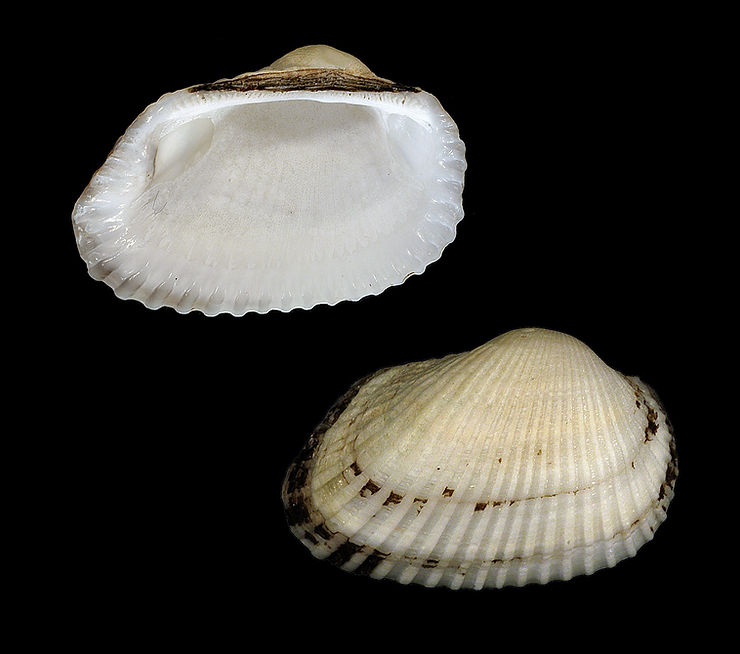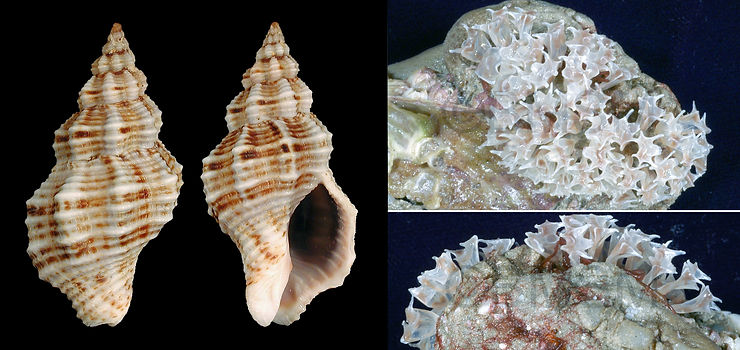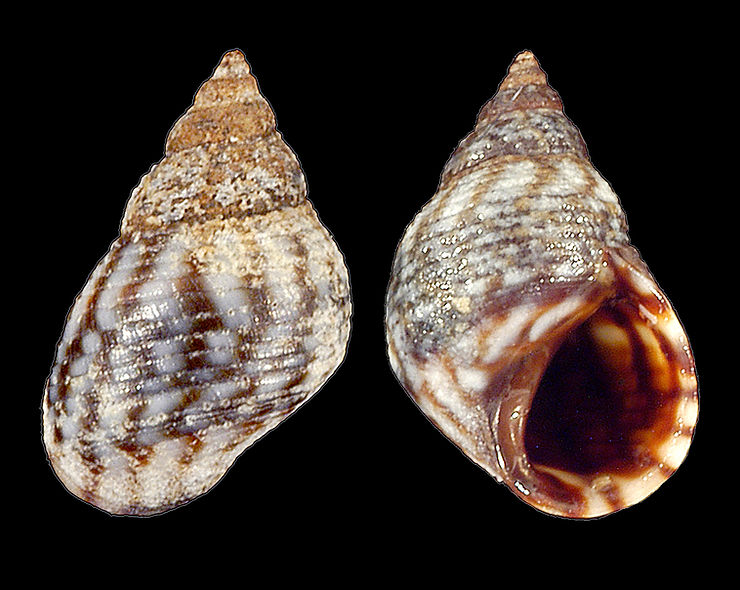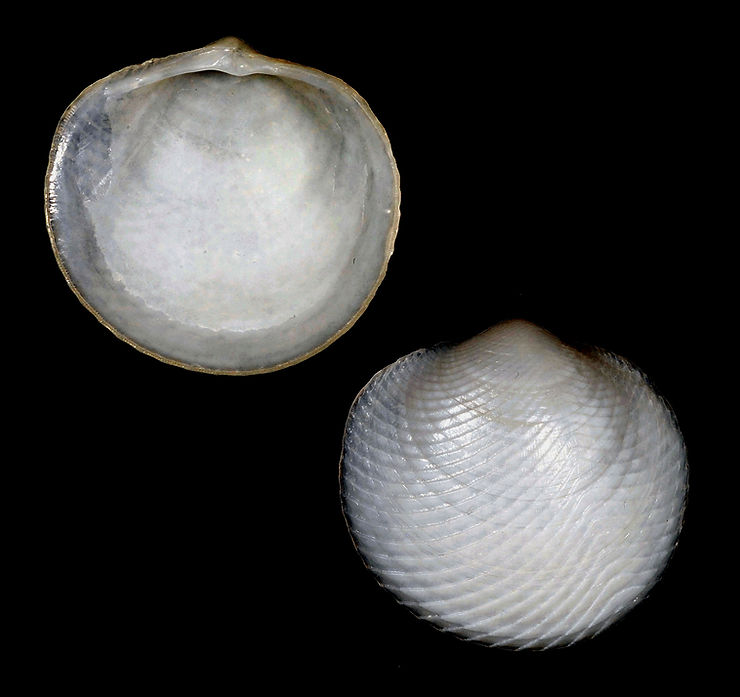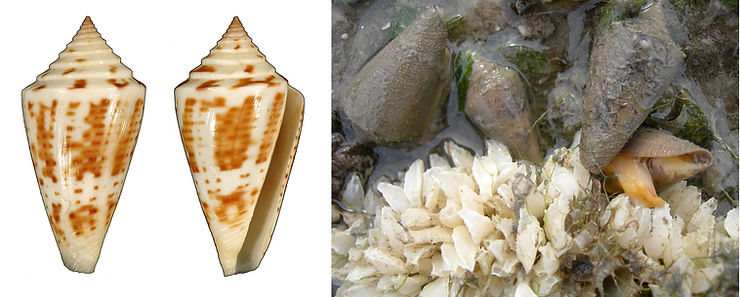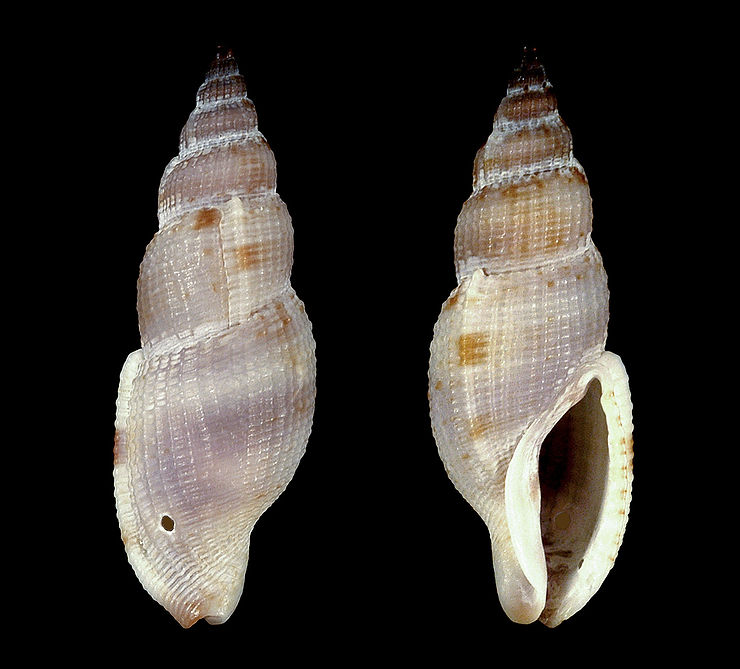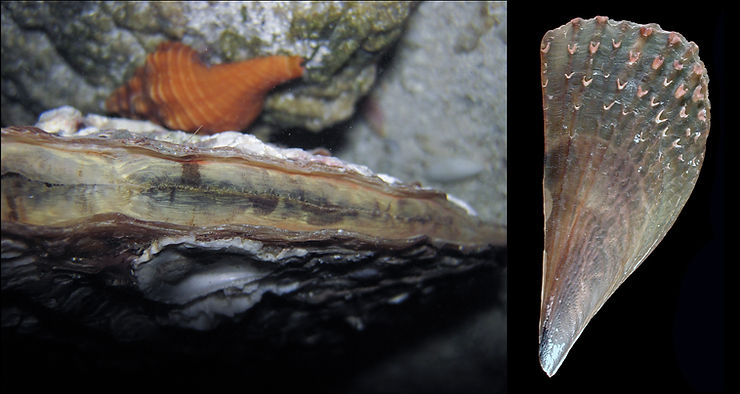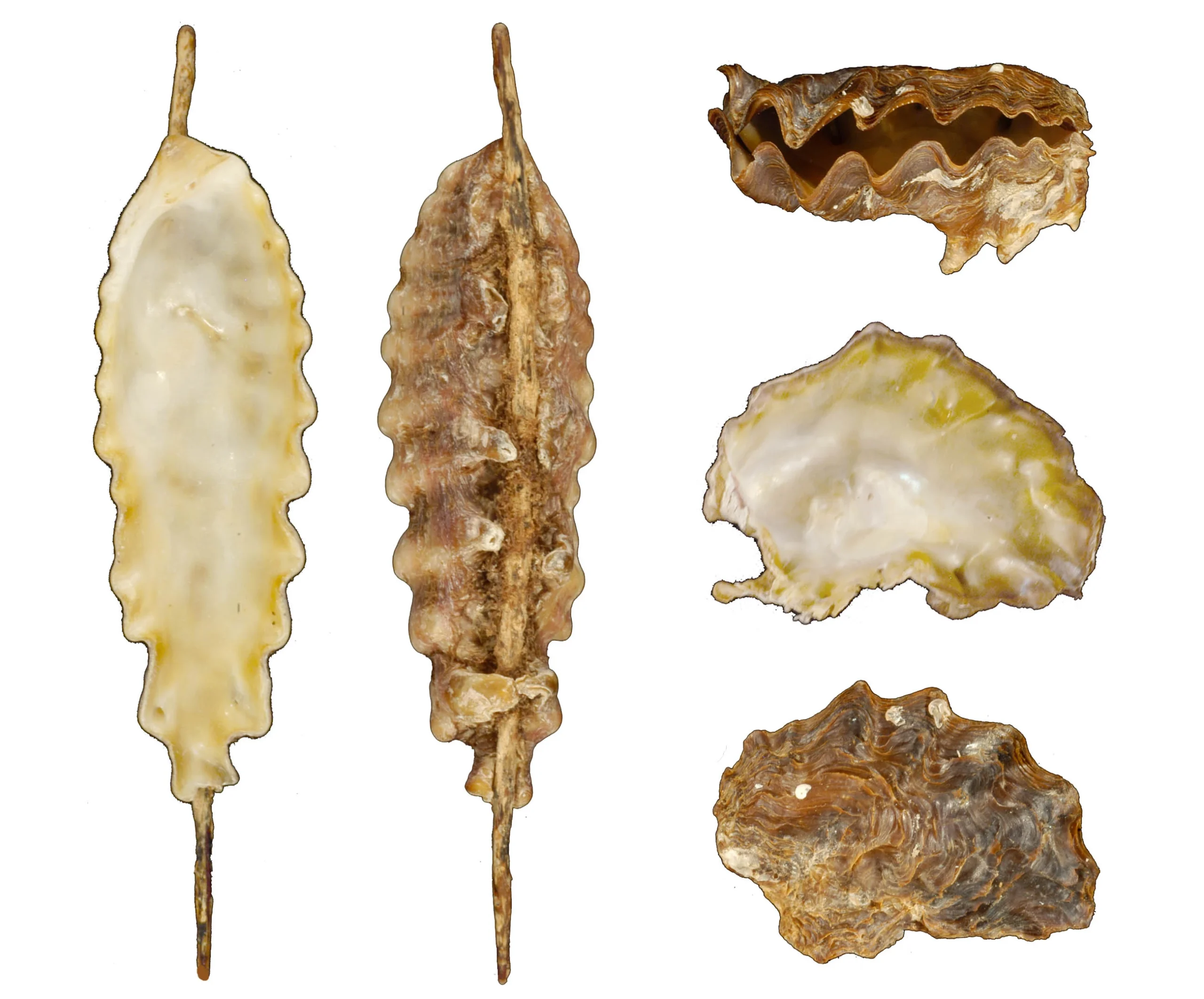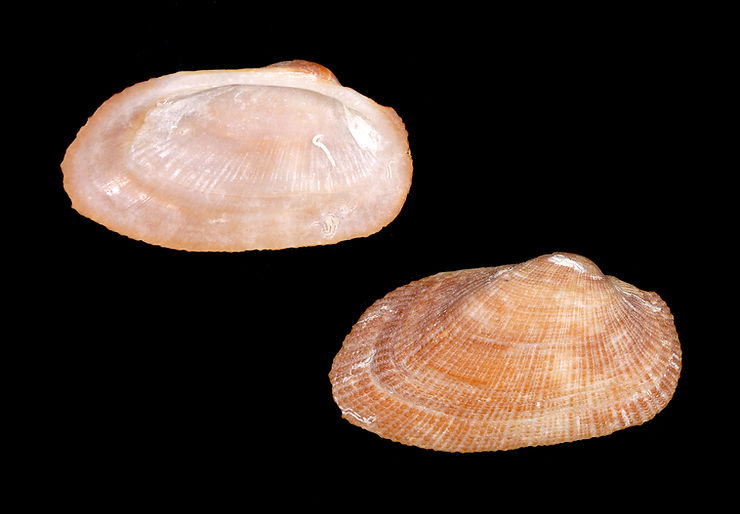
The Red-brown Ark
The Red-brown Ark, Barbatia cancellaria (Lamarck, 1819), is a relative of the famous Turkey Wing. The species lives offshore in the Gulf of Mexico, attached by a bundle of fibers (called byssus) to the underside of rocks and coral ledges. Valves of the Red-brown Ark have been found recently on Captiva and the Blind Pass area, where they have been found in sand deposited by the recent beach renourishment project. The shell in the illustration was found by Karla Mason of Grand Blanc, Michigan, on
